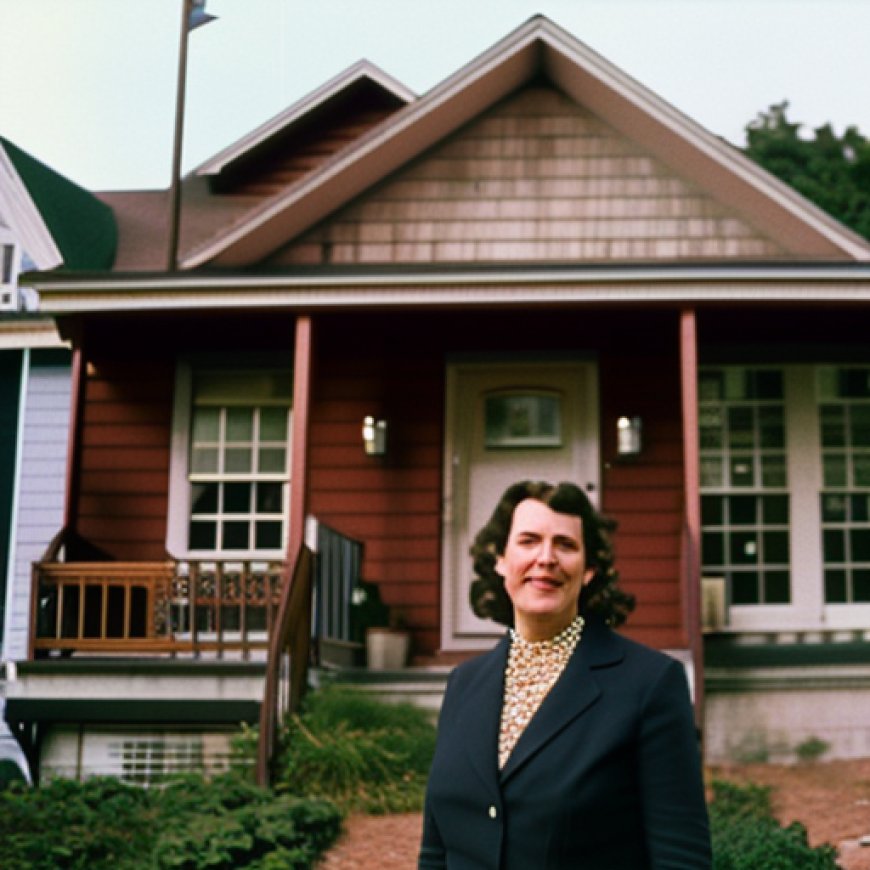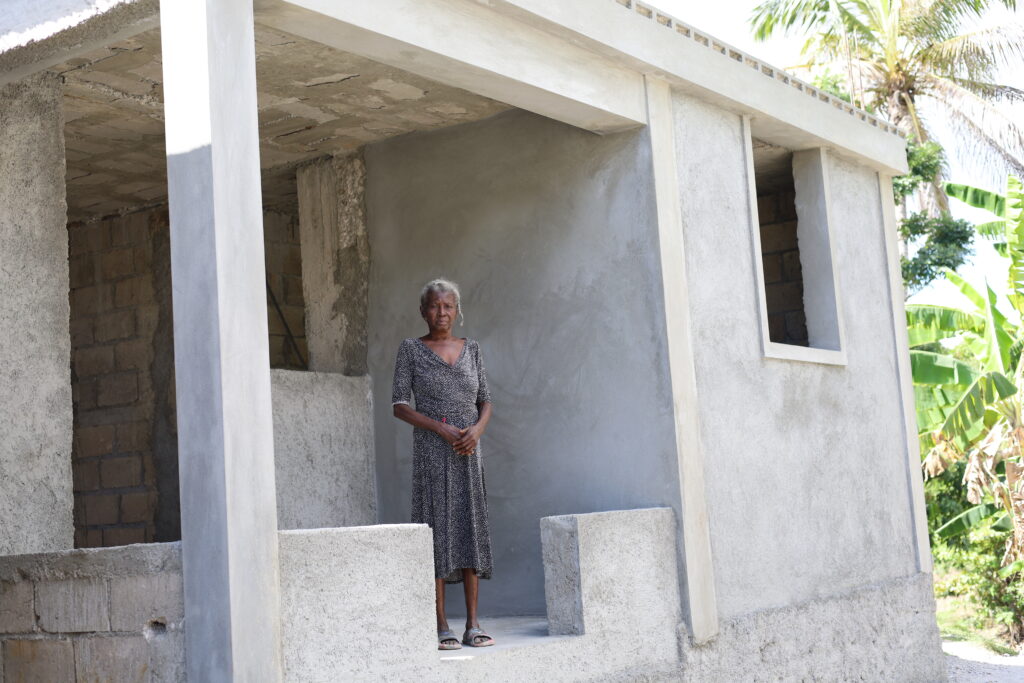Two decades of building resilience: Build Change founder, Elizabeth Hausler on the evolution of climate proof housing – Climate Champions
Two decades of building resilience: Build Change founder, Elizabeth Hausler on the evolution of climate proof housing Climate Champions


Build Change: Empowering Communities for Resilient Housing
By Elizabeth Hausler, Build Change Founder & CEO | April 24, 2024
In 2001, a devastating earthquake in Gujarat, India, destroying nearly a million homes and killing over 20,000 people, brought to light a critical, often overlooked aspect of disaster recovery: the resilience of our homes. This event not only shattered lives but also exposed the vulnerability of our built environment to natural disasters.
In the wake of this catastrophe, my journey as a civil engineer and a Fulbright Scholar took me to the heart of disaster zones, where I witnessed the stark reality that many reconstructed homes still failed to provide safety and security to their occupants. For instance, many homeowners whose homes had been reconstructed by international non-profit organizations in the aftermath of the 1993 Latur-Killari earthquake still feared for their safety sleeping in their homes nearly 10 years later. This insight led to a resolve: to find a sustainable solution to the man (or woman) made problem of people dying in disasters due to poorly built homes.
In 2004, driven by the belief that homeowners should be at the forefront of the rebuilding process, I founded Build Change. Our mission was clear: to empower local communities to build and rebuild their homes and schools to withstand the tests of nature. Over the past two decades, Build Change has evolved from an idea into a global force, partnering with homeowners, governments, NGOs, finance institutions, local builders, engineers, and materials producers in over 30 countries to enhance traditional building methods, ensuring that they are safe, culturally appropriate, and environmentally sustainable.
Our efforts have yielded transformative results. Since our inception, we’ve made over 1.17 million people and 230,000 buildings safer, preserving approximately $4.7 billion in assets. This has not only saved lives but has also helped communities maintain and increase their wealth. Initially, our work focused on post-disaster scenarios, such as the aftermath of the tsunami in Indonesia and the Sichuan earthquake. However, the devastating 2010 Haiti earthquake marked a pivotal moment for Build Change. It underscored the urgent need to shift our focus from reactive post-disaster building to proactive disaster prevention.

Sylviana Plaisimond standing in new housing in Haiti. Image: Build Change.
Enhancing Resilience through Retrofitting
In response, we pioneered techniques to retrofit existing buildings, demonstrating that it is both feasible and cost-effective to strengthen buildings in resource-constrained environments before disaster strikes. This shift has become increasingly critical as the frequency and severity of climate-related disasters have escalated.
Today, an estimated 2.8 billion people live in substandard housing vulnerable to these disasters. In response, we have intensified our efforts to retrofit these homes, particularly in densely populated urban areas where the risk of catastrophic loss of life is highest.
Our work in Haiti evolved into a broader strategy to enhance urban housing resilience to earthquakes across the globe. From partnering with local NGOs in China in the wake of the Sichuan earthquake to creating networks of local builders in Haiti, and collaborating with the Colombian Ministry of Housing and the Honduran Red Cross, our global footprint has expanded significantly. In 2023, our reach extended into Africa, with projects in Mozambique, Comoros, and Morocco, reflecting our commitment to regions that are increasingly vulnerable to disasters and climate impacts.
The Climate Resilient Housing Initiative
The launch of the Climate Resilient Housing Initiative at COP26 in 2021 was a landmark moment for Build Change. This initiative forged new partnerships across governments, financial institutions, philanthropies, and technological sectors, focusing collective efforts on a singular goal: to build resilience into the fabric of global housing.
Building for Longevity
The landscape of resilient housing has undergone transformative changes, reflecting a shift in priorities and practices that emphasize sustainability and safety. For instance, when Build
SDGs, Targets, and Indicators
1. Which SDGs are addressed or connected to the issues highlighted in the article?
- SDG 1: No Poverty
- SDG 3: Good Health and Well-being
- SDG 5: Gender Equality
- SDG 7: Affordable and Clean Energy
- SDG 9: Industry, Innovation, and Infrastructure
- SDG 11: Sustainable Cities and Communities
- SDG 13: Climate Action
- SDG 17: Partnerships for the Goals
2. What specific targets under those SDGs can be identified based on the article’s content?
- Target 1.5: By 2030, build the resilience of the poor and those in vulnerable situations and reduce their exposure and vulnerability to climate-related extreme events and other economic, social, and environmental shocks and disasters.
- Target 3.9: By 2030, substantially reduce the number of deaths and illnesses from hazardous chemicals and air, water, and soil pollution and contamination.
- Target 5.c: Adopt and strengthen sound policies and enforceable legislation for the promotion of gender equality and the empowerment of all women and girls at all levels.
- Target 7.1: By 2030, ensure universal access to affordable, reliable, and modern energy services.
- Target 9.1: Develop quality, reliable, sustainable, and resilient infrastructure, including regional and transborder infrastructure, to support economic development and human well-being, with a focus on affordable and equitable access for all.
- Target 11.1: By 2030, ensure access for all to adequate, safe, and affordable housing and basic services and upgrade slums.
- Target 13.1: Strengthen resilience and adaptive capacity to climate-related hazards and natural disasters in all countries.
- Target 17.17: Encourage and promote effective public, public-private, and civil society partnerships, building on the experience and resourcing strategies of partnerships.
3. Are there any indicators mentioned or implied in the article that can be used to measure progress towards the identified targets?
- Indicator 1.5.1: Number of deaths, missing persons, and directly affected persons attributed to disasters per 100,000 population.
- Indicator 3.9.1: Mortality rate attributed to household and ambient air pollution.
- Indicator 5.c.1: Proportion of countries with systems to track and make public allocations for gender equality and women’s empowerment.
- Indicator 7.1.2: Proportion of population with access to electricity.
- Indicator 9.1.1: Proportion of the rural population who live within 2 km of an all-season road.
- Indicator 11.1.1: Proportion of urban population living in slums, informal settlements, or inadequate housing.
- Indicator 13.1.1: Number of deaths, missing persons, and directly affected persons attributed to disasters per 100,000 population.
- Indicator 17.17.1: Amount of United States dollars committed to public-private and civil society partnerships.
SDGs, Targets, and Indicators Table
| SDGs | Targets | Indicators |
|---|---|---|
| SDG 1: No Poverty | Target 1.5: By 2030, build the resilience of the poor and those in vulnerable situations and reduce their exposure and vulnerability to climate-related extreme events and other economic, social, and environmental shocks and disasters. | Indicator 1.5.1: Number of deaths, missing persons, and directly affected persons attributed to disasters per 100,000 population. |
| SDG 3: Good Health and Well-being | Target 3.9: By 2030, substantially reduce the number of deaths and illnesses from hazardous chemicals and air, water, and soil pollution and contamination. | Indicator 3.9.1: Mortality rate attributed to household and ambient air pollution. |
| SDG 5: Gender Equality | Target 5.c: Adopt and strengthen sound policies and enforceable legislation for the promotion of gender equality and the empowerment of all women and girls at all levels. | Indicator 5.c.1: Proportion of countries with systems to track and make public allocations for gender equality and women’s empowerment. |
| SDG 7: Affordable and Clean Energy | Target 7.1: By 2030, ensure universal access to affordable, reliable, and modern energy services. | Indicator 7.1.2: Proportion of population with access to electricity. |
| SDG 9: Industry, Innovation, and Infrastructure | Target 9.1: Develop quality, reliable, sustainable, and resilient infrastructure, including regional and transborder infrastructure, to support economic development and human well-being, with a focus on affordable and equitable access for all. | Indicator 9.1.1: Proportion of the rural population who live within 2 km of an all-season road. |
| SDG 11: Sustainable Cities and Communities | Target 11.1: By 2030, ensure access for all to adequate, safe, and affordable housing and basic services and upgrade slums. | Indicator 11.1.1: Proportion of urban population living in slums, informal settlements, or inadequate housing. |
| SDG 13: Climate Action | Target 13.1: Strengthen resilience and adaptive capacity to climate-related hazards and natural disasters in all countries. | Indicator 13.1.1: Number of deaths, missing persons, and directly affected persons attributed to disasters per 100,000 population. |
| Behold! This splendid article springs forth from the wellspring of knowledge, shaped by a wondrous proprietary AI technology that delved into a vast ocean of data, illuminating the path towards the Sustainable Development Goals. Remember that all rights are reserved by SDG Investors LLC, empowering us to champion progress together.
Source: climatechampions.unfccc.int
Join us, as fellow seekers of change, on a transformative journey at https://sdgtalks.ai/welcome, where you can become a member and actively contribute to shaping a brighter future.
|








